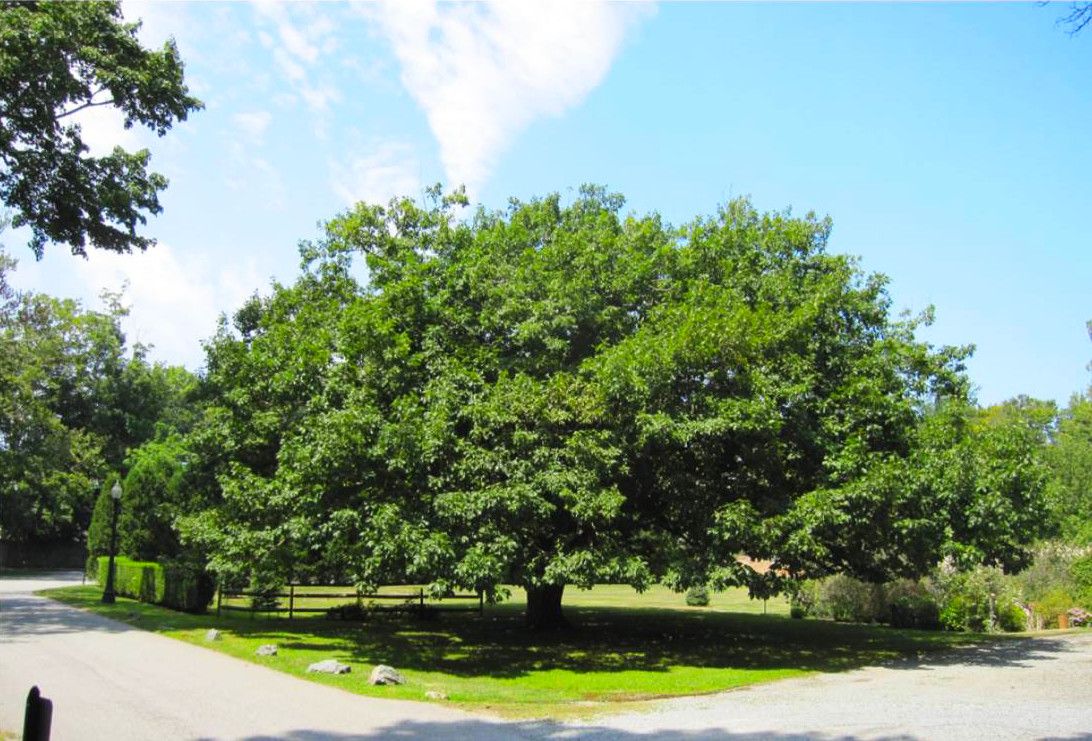Champion Trees
Helen Walker Raleigh Champion Trees of Rhode Island Registry Program
We can imagine there has been a special interest in big trees for as long as mankind has been present in The Ocean State, however, it wasn’t until the 1930s that “champion tree hunting” became a hobby for some. Perhaps the decline of the American Elm prompted us to start recording the biggest trees in our towns and cities. The earliest tree measurement we have on record was made on March 16, 1931 by John B. Hudson of Hope for a black oak in Buttonwoods “where the Shriner’s Hospital is”. From the 1940s through the 1960s Elizabeth G. Weeks of Providence kept the file of big tree measurements in a wooden box labeled simply “E’s Tree Measurements”. These measurements were often collected on AMC hikes and outings in RI and other places in New England.
Champion Tree ImageDuring the 1970s, Richard L. Champlin of Jamestown became known as “The Tree Man” in Rhode Island – and records of big trees and inquiries were directed his way. As a librarian at the Redwood Library in Newport he developed an inventory of the Specimen Trees of Newport and in 1976 wrote a small book titled “Trees of Newport on the estates of the Preservation Society of Newport County”. Over time he became one of the foremost Natural History experts in the state, traveling the back roads and shorelines and documenting a broad diversity of natural and cultural features. After several decades of work his work on big trees alone resulted in an 8-inch stack of handwritten index cards, including both native trees and urban trees. This was the original big tree registry for the state.
After Mr. Champlin’s death in 2003, Paul Dolan, as Principal Forester at RIDEM saw the need to perpetuate this survey and applied for funding offered by the Wald Grant program of the RI Nature Conservancy and the RI Natural History Survey. After funding was obtained Mr. Dolan oversaw the partial transcription of the cards and establishment of the Big Tree Program at the RI Tree Council.
With additional funding support provided by the Helen Walker Raleigh Big Tree Program, a group of field examiners were dispatched to confirm and re-measure many of the champs and investigate new nominations submitted by big tree hunters throughout the State. The Big Tree program was popularized by the Tree Council in a series of annual calendars that illustrated the champions and other noteworthy trees.The first summary publication of Rhode Island Champion Trees was published by the RITree in 2008.
The Helen Walker Raleigh Champion Tree Program is generously supported with a grant from the Helen Walker Raleigh Tree Care Trust managed by the Rhode Island Foundation.
“Love the Champion Tree Program and all the info on the web site. Great job.”
Champion Trees
Big Trees Fall in Warwick
Traveling Trees

2019 Rhode Island Champion Tree List
